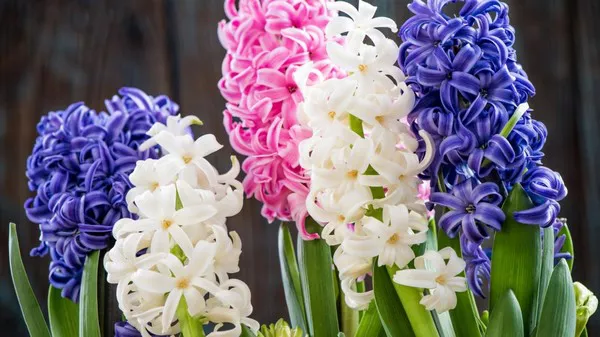Jasmine, with its fragrant blossoms and elegant vines, is a beloved addition to gardens and landscapes. However, the disappointment of a jasmine plant not flowering can leave gardeners searching for answers. The lack of blooms on your jasmine may be attributed to various factors, from environmental conditions to cultural practices.
Understanding Jasmine Varieties
Before delving into the potential issues hindering your jasmine’s flowering, it’s crucial to recognize that there are various jasmine species and cultivars, each with its own unique flowering characteristics. Common jasmine varieties include Jasminum officinale (common jasmine), Jasminum sambac (Arabian jasmine), and Jasminum polyanthum (pink jasmine). Different jasmine varieties may have distinct blooming patterns influenced by factors such as climate, light requirements, and pruning preferences.
Environmental Factors
Insufficient Sunlight:
One of the primary reasons why jasmine plants may not flower is insufficient sunlight. Jasmine is known for its love of sunlight, and inadequate light exposure can impede blooming. Ensure that your jasmine receives at least 6-8 hours of direct sunlight daily. If your plant is positioned in a shaded area, consider relocating it to a sunnier spot to stimulate flower production.
Extreme Temperatures:
Jasmine thrives in moderate temperatures, and extremes on either end can impact its blooming. Extremely high temperatures, especially without adequate moisture, may stress the plant and inhibit flower formation. Similarly, exposure to freezing temperatures can damage buds and prevent blooming. Maintain a consistent and moderate temperature range for optimal jasmine flower development.
Improper Watering Practices:
Both overwatering and underwatering can contribute to a jasmine plant’s reluctance to flower. Inconsistent watering or allowing the soil to become waterlogged can lead to root rot and nutrient deficiencies, affecting overall plant health and flower production. Establish a regular watering schedule, allowing the soil to slightly dry between waterings to maintain optimal moisture levels.
Soil Quality:
The type of soil in which jasmine is planted plays a crucial role in its flowering capacity. Jasmine prefers well-draining soil that allows excess water to escape easily. Compacted or clayey soils can lead to poor drainage, affecting root health and subsequently hindering flower development. Amend the soil with organic matter to improve drainage and enhance the overall soil structure.
Cultural Practices
Lack of Pruning:
Jasmine varieties, especially those with vining habits, benefit from regular pruning to encourage branching and stimulate flowering. If your jasmine has not been pruned regularly, it may become leggy, with fewer flowering branches. Prune your jasmine after the flowering season to shape the plant, remove dead wood, and promote new growth, leading to more prolific blooms.
Incorrect Pruning Time:
Pruning at the wrong time can impact a jasmine plant’s ability to produce flowers. Prune spring-blooming varieties immediately after flowering, as they set buds for the following year shortly after blooming. For summer-blooming varieties, prune in late winter or early spring before the new growth emerges. Avoid pruning in late summer or fall, as this can remove potential flowering buds.
Over-Fertilization:
While fertilizing is essential for plant health, excessive or imbalanced fertilizer application can hinder jasmine flowering. High-nitrogen fertilizers promote lush foliage at the expense of blooms. Use a balanced fertilizer with a higher ratio of phosphorus, which encourages flowering. Apply fertilizer in spring and early summer, following package instructions to prevent over-fertilization.
Container Size:
If your jasmine is grown in a container, the size of the pot can impact its flowering ability. A root-bound plant, where the roots outgrow the container, may struggle to absorb nutrients and water effectively. Transplant your jasmine into a larger container if you observe crowded roots or if the plant has not been repotted for an extended period.
Pests and Diseases
Pest Infestations:
Pests, such as aphids, spider mites, and scale insects, can sap the energy from a jasmine plant, affecting its ability to flower. Regularly inspect your jasmine for signs of pests, including distorted leaves, sticky residue, or visible insects. Treat pest infestations promptly using appropriate insecticidal solutions to minimize their impact on flowering.
Diseases:
Fungal diseases, such as powdery mildew or root rot, can compromise a jasmine plant’s overall health, leading to poor flower production. Ensure proper air circulation around the plant and avoid overwatering to prevent fungal issues. If you suspect a disease, promptly treat the jasmine with fungicides or other recommended solutions to mitigate the impact on flowering.
Root Disturbance:
Jasmine plants are sensitive to root disturbance, and activities such as excessive digging or transplantation can temporarily disrupt their blooming pattern. Minimize root disturbance, and if transplantation is necessary, take care to preserve the root system. Allow the plant time to recover before expecting consistent flower production.
Lack of Pollination:
Some jasmine varieties may require pollination for successful flower development. In indoor settings or gardens with limited pollinators, hand pollination may be necessary. Gently transfer pollen from one flower to another using a small brush or cotton swab to facilitate pollination and encourage the formation of seeds, which can promote future blooming.
Conclusion
A jasmine plant not flowering can be a source of frustration for gardeners, but with careful attention to environmental conditions, cultural practices, and potential pest issues, you can encourage your jasmine to bloom luxuriantly. Regular pruning, proper watering, and mindful fertilization are key components of successful jasmine care. By understanding the unique requirements of your specific jasmine variety and addressing potential hindrances, you can unlock the full potential of these fragrant and enchanting blooms in your garden. Remember that patience is a virtue in gardening, and with the right care, your jasmine will reward you with a profusion of flowers, bringing joy and fragrance to your outdoor space.


